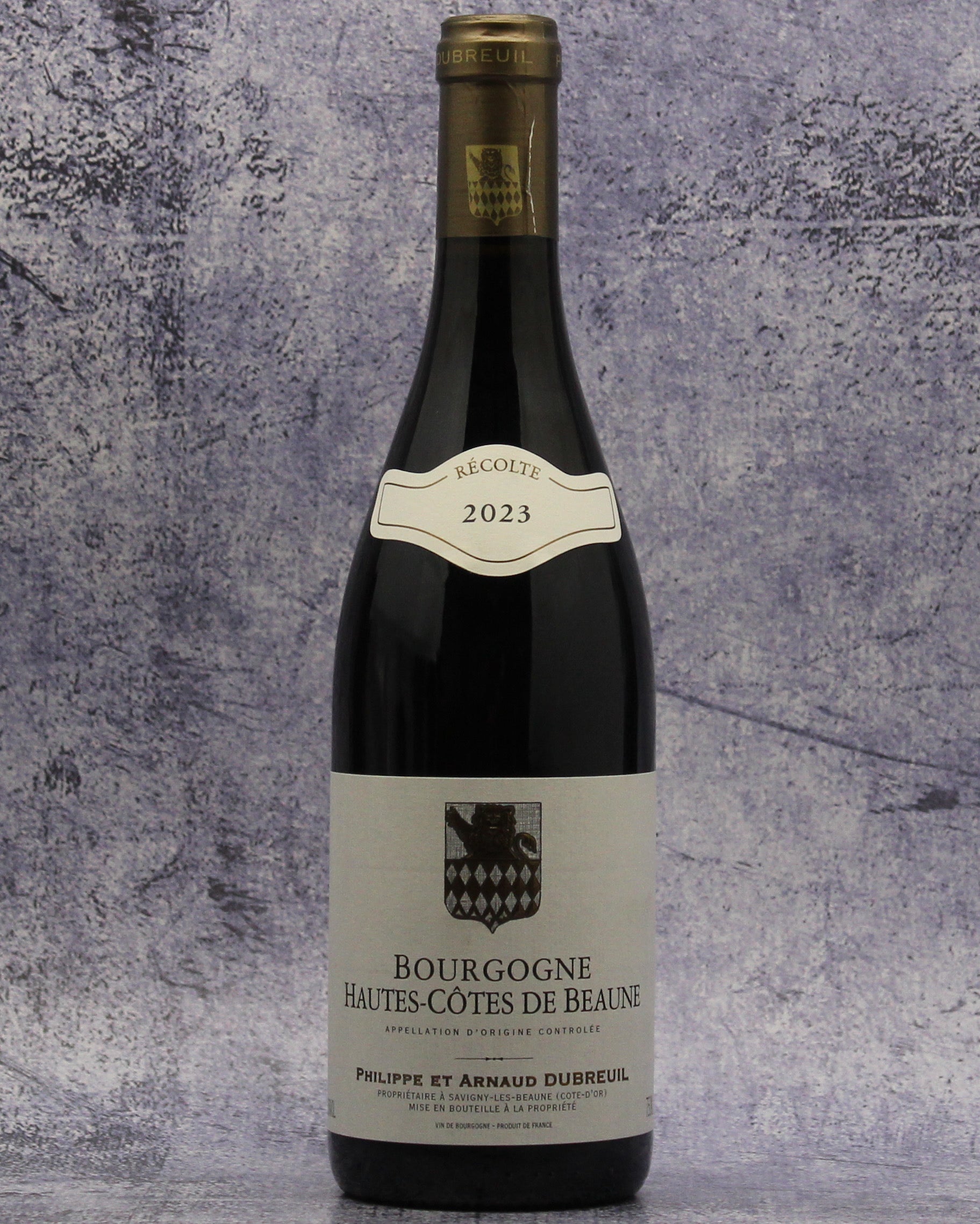Description
From: Haute-Côtes de Beaune, Burgundy, France
Varietal: Pinot Noir
Taste: Generous and delicious, this Hautes-Côtes de Beaune rouge shows off raspberry confit, blood orange, pomegranate, and bing cherry in a cheerfully vibrant bouquet of aromas and flavors. As the wine opens up, it unfurls layers of earth, and its fruit and spice notes take on more dimension, depth, and terroir-driven character. Lively acidity and supple tannins culminate in a clean finish and call for another glass.
Pairing: Duck confit, risotto, or a succulent roasted duck breast, mainly when served with a berry reduction, can accentuate the wine's inherent red fruit characteristics, while the meat's richness is a perfect counterbalance to the tannins. For those preferring a plant-based option, grilled portobello mushrooms, mushroom risotto/polenta/tarts offer an earthy depth that mirrors the wine's nuanced terroir notes. Traditional dishes like Beef Bourguignon or Coq au Vin resonate with the wine's spicy and earthy undertones, with the dish's complexity matching the wine's layered profile. Similarly, a simple roast chicken infused with herbs such as thyme and rosemary underscores the wine's fruitiness and spice.
Garlic and Thyme Roasted Chicken With Crispy Drippings Croutons
By Melissa Clark
About. The story of Domaine Philippe et Arnaud Dubreuil begins with the vision of Paul Dubreuil in the late 1940s. It was a post-war era filled with hope and the promise of new beginnings, and for Paul, this meant laying the foundations of a winemaking legacy that would span generations. Through dedication and a passion for the vine, the initial estate steadily grew, marking the beginning of a journey that was to become synonymous with quality winemaking in the region.
In 1973, Philippe Dubreuil, one of Paul’s sons, established himself in the center of the village, bringing together two separate estates under one vision in 1989 following the unexpected passing of Paul Dubreuil. This pivotal moment marked a new chapter for the family and solidified the estate’s commitment to excellence in viticulture and winemaking.
As the years turned, a new generation was ready to take the helm. The turn of the millennium saw the third generation stepping into roles within the family estate, but it wasn’t until 2010 that Arnaud Dubreuil officially took the reins. Under his guidance, the estate experienced thoughtful growth, expanding from 10 hectares in 2010 to 12.5 hectares. This expansion included the introduction of a Corton Blanc Grand Cru, "Les Grandes Lolières,” to the wine list, elevating the estate’s offerings to new heights.
The estate prides itself on its harvesting process, a meticulous labor of love that spans approximately 12 days. Around thirty individuals, fueled by passion and precision, handpick the grapes, carefully placing them in 25kg boxes. This method ensures that the grapes are not crushed, arriving at the vat room in pristine condition and ready for vinification.
The Hautes-Côtes de Beaune benefits from a slightly cooler climate than the vineyards on the lower slopes. This cooler climate results from the higher elevation, which can significantly influence the ripening period of the grapes. The growing season tends to be longer, with grapes ripening more slowly, which can lead to a fresher acidity and more nuanced aromatics in the wines. The cooler temperatures can also pose a risk of frost, but the vineyards' exposition and slope often mitigate this danger.
The soil in the Hautes-Côtes de Beaune is varied, with a mixture of limestone and marl interspersed with clay and chalk. This diversity in soil types contributes to the complexity of the wines produced in the region. The limestone is particularly beneficial for Chardonnay, the primary white grape varietal grown in the area, contributing to the mineral character often found in the whites from this region. Pinot Noir, the main red grape varietal, also thrives here, producing elegant wines and a bright fruit profile.
The red vinification process at Domaine Philippe et Arnaud Dubreuil is a testament to the estate's commitment to quality and tradition. Utilizing a vibrating sorting table, the grapes are freed of unwanted debris, allowing for alcoholic fermentation with whole grapes. This method, dependent on the year's conditions, enhances the wine's complexity and aging potential. Following fermentation, the wine undergoes a meticulous aging process, varying from 8 to 14 months based on the appellation and vintage.
Domaine Philippe et Arnaud Dubreuil approaches bottling and filtration with the utmost respect for the wine. The estate employs a gentle gravity filtration method to ensure the wines retain their distinct characteristics and integrity. This careful approach can sometimes result in a small halo at the bottom of the bottle – a mark of quality and minimal intervention.

